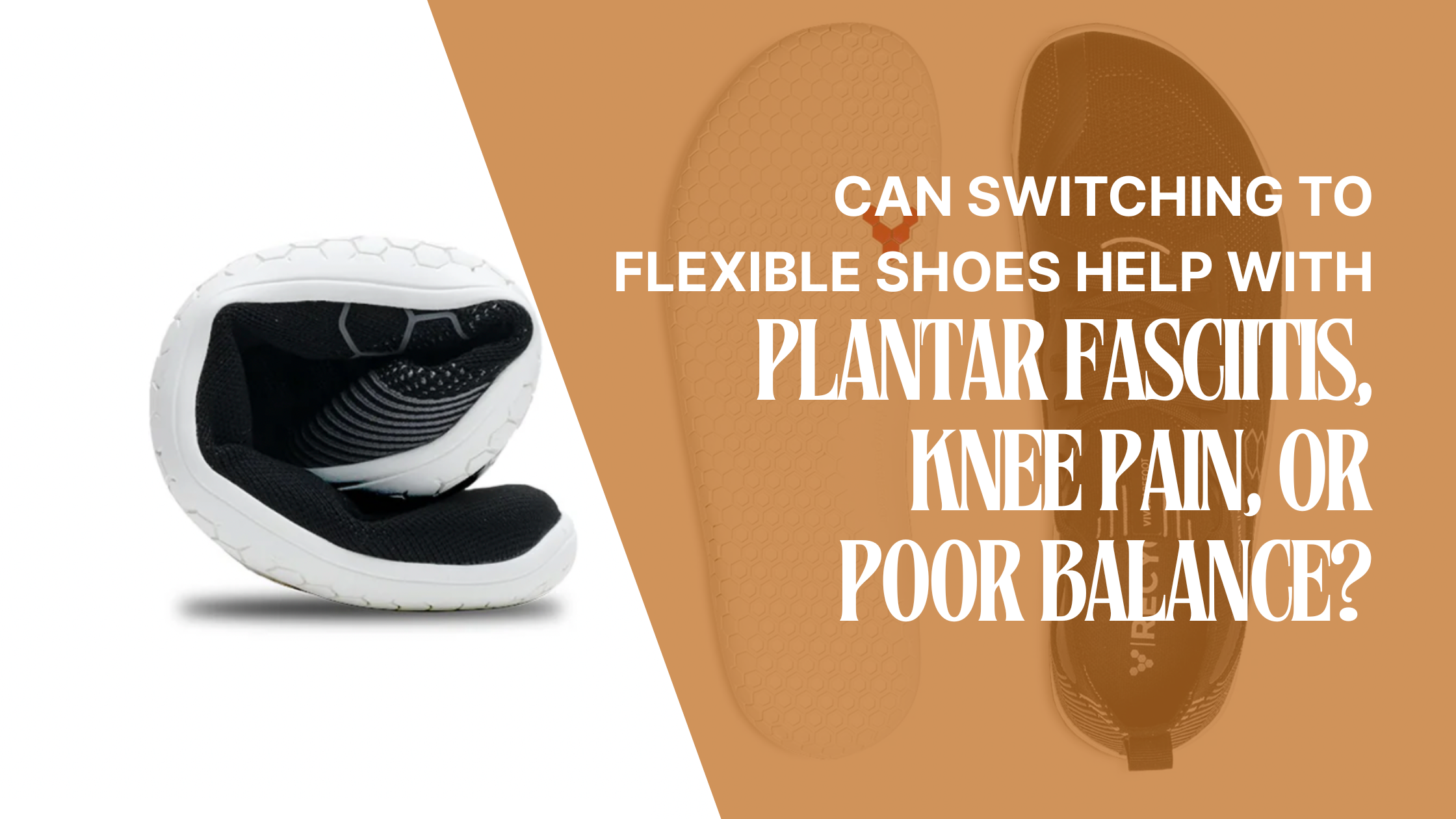Hey everyone,
This week, we’re diving into the third essential “F” of natural footwear — Flexible.
If you're trying to improve your foot health, reduce pain, or simply move more naturally, keep reading. This is a game changer.
Why Foot Flexibility Is Essential
The human foot is a biomechanical masterpiece — 26 bones and 33 joints working together to keep you balanced, mobile, and resilient. Those joints are meant to move. If motion weren’t necessary, joints wouldn’t exist there in the first place.
But here's the catch: when we cram our naturally mobile feet into rigid, conventional shoes, we shut down that natural movement. And over time, stiff shoes = stiff feet.
Stiff Shoes = Dysfunctional Feet
Think of it like this: imagine wearing a cast on your wrist for 6 weeks. What happens when you take it off? It’s weak and stiff, right? That’s exactly what happens when you wear restrictive shoes all day. This is a classic case of the SAID principle — Specific Adaptation to Imposed Demands — where the body adapts to what it experiences regularly.
When the foot can’t move freely:
- Joints lock up
- Muscles weaken and shrink
- Natural support systems go offline
Eventually, the foot becomes a block of bone — no resilience, no shock absorption, and no strength.
What Happens When Feet Can’t Move?
Immobile, underused feet don’t just lead to foot pain. They cause ripple effects across your entire body:
- Higher risk of foot injuries like plantar fasciitis
- More load on your ankles, knees, hips, and spine
- Poor balance and stability
- Limited mobility and reduced performance
And here’s the real kicker — most people don’t connect their knee pain or back issues to weak, stiff feet. But it’s all linked.
The Solution: Choose Flexible Footwear
One of the key principles of natural footwear is flexibility. Flexible shoes move with your feet, not against them. This freedom allows:
- The 33 joints in each foot to move naturally
- Foot muscles to stay active and strong
- Better balance and movement coordination
- Reduced stress on your knees and spine
How Do You Know If a Shoe Is Truly Flexible?
Here’s a simple test: try to bend, twist, or fold the shoe. A truly flexible shoe — like those offered at Sole Freedom — will give easily. If it doesn’t, it’s likely limiting your natural movement.
Bottom Line: Flexible Shoes Support Natural Movement
Every step you take in natural, flexible shoes helps maintain your foot mobility and muscle strength. That means fewer injuries, better posture, and long-term resilience — not to mention relief from chronic foot pain.
Choosing flexible footwear is a one-time decision that continues to support your body every day.
If someone you care about is struggling with foot pain, share this with them. Let them know that healing starts from the ground up — and it begins with choosing the right shoes.
Thanks for tuning in.
Until next time,
Nick
🦶 FAQ: Flexible Footwear & Foot Health
1. Can flexible shoes really help with plantar fasciitis?
Yes — flexible, zero-drop footwear allows your foot to move naturally, which helps strengthen foot muscles and relieve strain on the plantar fascia. Over time, this can reduce or even eliminate symptoms of plantar fasciitis.
2. What’s the difference between flexible shoes and traditional running shoes?
Traditional shoes often have rigid soles, narrow toe boxes, and elevated heels — all of which restrict natural foot movement. Flexible shoes, like those at Sole Freedom, are designed to bend, twist, and move with your foot, supporting natural biomechanics.
3. How do I know if a shoe is flexible enough?
Try the bend-and-twist test: if the shoe easily bends at the midfoot and twists in your hands, it's flexible. A natural shoe should mimic the way your foot moves barefoot — anything stiff is likely too restrictive.

